A happy Saint-Sylvestre to you all! A few of you may wonder what that means, but in France, New Year’s Eve is often called by the name of the saint whose day falls on December 31.
That fact got us thinking about similar “code words” in French that you pick up in passing or from newspapers and magazines. Such as the fact that “l’Hexagone” is a nickname for France, which is hexagon-shaped. Or that Paris is sometimes known as “Paname,” which may have something to do with Parisians’ fondness for Panama hats back in the day (opinions on the origins of the term differ). Or that Charles de Gaulle airport is also known as Roissy, after the commune in which much of it is located. And the Centre Pompidou is sometimes called Beaubourg after the neighbourhood it largely displaced.
The French also use code words in talking about government ministries. Newspapers often refer to the ministry’s location (like saying Whitehall when you mean the British civil service or the Pentagon when you mean the U.S. Department of Defense). In Paris, it’s the Quai d’Orsay for foreign affairs (shown below) or Bercy for finance and economic affairs, among many other examples. The technical term for this kind of substitution is metonymy – replacing a specific name with a related word.
The French also love initialisms and acronyms. Paris is full of them, from TGV to SAMU to CROUS. The first is a high-speed train, the second is a medical emergency services organization, the third is a student residence and/or restaurant.
Thinking about code words gave us the idea to put together 20 questions for Paris lovers. Something for those sluggish days after Christmas when newspapers often publish quizzes and huge crosswords. We’d also like to challenge readers to suggest questions of your own in the comments section, particularly questions that you’ve scratched your own heads over at some point.
Answers are at the bottom of the blog.
1. Two more examples of metonymy: which ministries are known by their locations in (1) the Place Beauvau and (2) the rue de Varenne?
2. Why did the rooster (coq) become one of the symbols of France?
3. Marie Curie is one of only five women interred in the Pantheon, but she was not the first. Who was?
4. The Arc de Triomphe at the head of the Champs-Elysées is not the only triumphal archway in Paris. How many others are there, and where are they?
5. This sketch by Edouard Manet show a fiacre. How did the horse-drawn cab get that name?
6. Which brilliant 19th-century composer in Paris was forced by her parents to marry a businessman 25 years her senior who disliked music, but later returned to composing with the encouragement of a friend, who eventually became her lover?
7. How did the former department store La Samaritaine get its name?
8. Between 1898 and 1902, a Paris church was constructed using structural iron and steel in an industrial style similar to that used for the buildings at the Exposition of 1900 or for railway stations. What is the church called and where is it?
9. Which writer who was dying in Paris said, “This wallpaper and I are fighting a duel to the death. Either it goes or I do”? Where was the room with the dire wallpaper?
10. Here’s a test for long-time readers of this blog. What is the object shown below? How was it used? Who developed it? Where could you see one now?
11. And another one for long-time readers. What is a chasse-roue? Where would you find one?
12. Where is the part of the city once known as the Point du Jour (Break of Day)? How did it get that name?
13. What taxidermist on the rue du Bac offers such things as stuffed zebras and preserved scorpions for sale?
14. In this postcard, you will see the name “Dufayel.” What is it advertising?
15. Which is the widest street in Paris (hint: even wider than the Champs-Elysées)?
16. What do the three Metro stations Arsenal (line 5), Champ de Mars (line 8), and Croix-Rouge (line 10) have in common?
17. This is a question once posed by a reader. Where was the original boutique of Rose Bertin, dressmaker to Marie-Antoinette (shown below in a portrait by Elisabeth Louise Vigée-LeBrun) and other grand ladies before the Revolution? What was it called?
18. Where are the Chevaux de Marly? Where were they before they were placed in their current location? And where were they before that?
19. If you were playing a word game such as Scattergories (Jeu du Baccalauréat) and you had to come up with a Paris street name for every letter of the alphabet, is there a Paris street name beginning with X?
20. In August 1976, a filmmaker mounted a camera on the front of his sports car and drove at full throttle through the nearly empty streets of Paris at dawn, from the Porte Dauphine to Sacré-Coeur, creating an exciting eight-minute film in a single take. Who was the filmmaker, and what was the name of the short film that resulted?
Answers:
1. The Place Beauvau stands for the Ministry of the Interior and the rue de Varenne for the Ministry of Agriculture. The rue de Varenne is also the site of the Hotel Matignon, the official residence of the prime minister (that’s what references to Matignon mean in the papers). There is always a police officer stationed at the corner of the rue de Varenne and the rue du Bac, outside one of our favourite cafés: the Café Varenne. Norman calls it the best guarded café in Paris. This photo, taken by Google Street view one day when the café was closed, shows its typical security detail.
2. The choice of the coq has nothing to do with the particular qualities of the bird, but with its name alone. In fact, it’s a pun. In Latin, cockerel is gallus, which is similar to the word Gaulois, another name for the French.
3. Marie Curie died in 1934 and her remains were transferred to the Pantheon in 1995. But in 1907, Sophie Berthelot, who died on the same day as her husband, chemist Marcellin Berthelot, was buried in the Pantheon with her husband, respecting the couple’s request to be buried together. Only three other women are honoured in the Panthéon: Geneviève de Gaulle-Anthonioz (Resistance fighter and social reformer), Germaine Tillio (Resistance fighter and political activist), and Simone Veil (Holocaust survivor and feminist politician). You’d think they could manage a few more…
4. There are four triumphal arches in Paris. Two were commissioned by Napoleon to celebrate his military victories in the early 19th century: the one at the head of the Champs-Elysées, commissioned in 1806, but not completed until the 1830s, and the smaller Arc du Triomphe du Carrousel at the opposite end, in the Louvre courtyard, surmounted by a figure in a chariot drawn by four horses resembling the horses of St. Mark in Venice (in Napoleon’s day, the actual Venice horses were placed there temporarily). The other two arches were commissioned by Louis XIV to celebrate his military victories in the 1660s: the Porte St-Denis and the Porte St-Martin, both of which replaced former fortified gates to the city. Today, they are located two blocks apart on the southern edge of the 10th arrondissement. In the postcard below, the Porte St-Martin is in the foreground, with the Porte St-Denis just visible in the background.
5. The Hôtel de Saint-Fiacre (named for an Irish saint who came to France in the 7th century) was an inn and tavern in the rue St-Martin. In the 17th century, the proprietor operated a successful business hiring out four-seater carriages and horses. They became known as fiacres. Because of this connection, St-Fiacre was eventually designated the patron saint of taxi-drivers.
6. Mélanie Hélène Bonis, known as Mel Bonis (1858 –1937), was a contemporary of Debussy at the Conservatoire and a student of César Franck. She wanted to marry poet and singer Amédée Landély Hettich, but her parents disapproved and forced her to marry Albert Domange, an unmusical widower with five children from a previous marriage. After seven years of strict domesticity, during which she had three children of her own, she met Hettich again and he encouraged her to return to composition, which she did to great acclaim, writing romantic works for piano, organ, chamber groups, orchestra, choirs and solo singers. She also had an affair with Hettich that produced an illegitimate child and a host of unforeseen complications. Here is a recording of her piano piece “Carillons mystiques” that includes photographs of her. We are amazed her work is not better known. She’d get our vote for a transfer to the Pantheon.
7. La Samaritaine was originally the name of a water pump on the Seine beside the Pont-Neuf with a sculpture of Jesus and the woman of Samaria (hence la Samaritaine) who spoke to him when she came to draw water from a well, as described in the Gospel of St. John. The pump stood there from 1608 to 1813. The shop that eventually grew into a large department store was located nearby and took the same name.
8. Notre Dame du Travail was constructed with an iron-and-steel-supported interior. It is located on the rue Vercingetorix in the 14th arrondissement. It is Norman’s favourite Paris church, and he wrote about it here.
9. Oscar Wilde is supposed to have uttered this line close to the time of his death in November 1900. He was staying at what was then called Hotel d’Alsace and is now simply l’Hotel, on the rue des Beaux-Arts in the 6th arrondissement. The wallpaper that won the battle with the writer was finally replaced 100 years later. You can stay in the Oscar Wilde room, which now has peacock wallpaper, once the hotel reopens after the pandemic.
10. The picture shows a visual telegraph machine, invented by Claude Chappe in the 1790s and used to transmit messages over long distances that could be deciphered by sight from miles away. We told the story in this blog post. You can find a model in the Musée des Arts et Métiers, but about two dozen installations remain scattered about the country, such as this one near Narbonne.
11. A chasse-roue is a stone or metal bumper at the edges of gates through which horse-drawn carriages were designed to pass. Its function is to protect the sides of the gate from damage by the carriage wheels. You can see them throughout the older parts of Paris. We wrote about them in a previous blog.
12. The Point du Jour is at the southernmost tip of the 16th arrondissement, beside the river. It got that name because of a duel that took place there at the break of day on March 4, 1748, between Antoine Francois, the Count of Coigny and the prince de Dombe, over a perceived insult to the prince (an illegitimate grandson of the Louis XIV). The count was killed. The moral of this story: Do not insult illegitimate members of the royal family; it won’t end well.
13. Deyrolle at 46 rue du Bac has a unique cabinet of curiosities on its upper floor. On our last visit, we were very taken with a stuffed owl (the stuffed giraffe would never have fit into our house), but came to our senses. The business was founded in 1831, and has passed through several owners. In 2008, the shop was largely ruined by a fire, but it has been repaired and is as enthralling as ever.
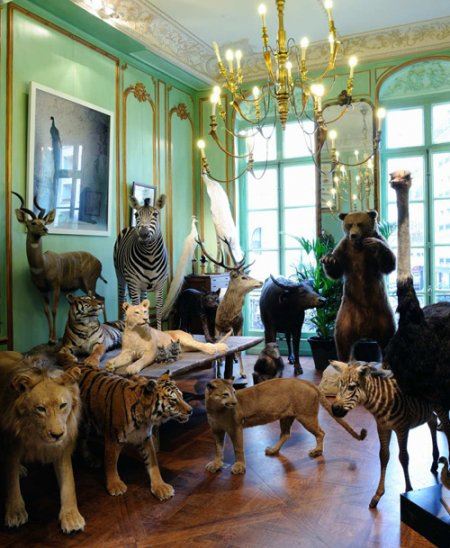 Deyrolle also prints and sells those wonderful maps of the products of France that used to adorn French schoolrooms. For all we know, they still do.
Deyrolle also prints and sells those wonderful maps of the products of France that used to adorn French schoolrooms. For all we know, they still do.
14. Georges Dufayel gave his name to a massive department store or palais de la nouveauté on the rue de Clignancourt. It was known for house furnishings of all kinds and even had a cinema. Dufayel was not just a department-store owner, but also ran a successful publicity business, so was able to get his name on all kinds of surfaces. He is largely forgotten today, but his vast store was famous in its day, with a revolving beacon on top. We wrote about the man and his department store here.
15. The widest street in Paris is the avenue Foch in the 16th arrondissement, with its huge linear gardens on either side of the road. The avenue is lined with some of the most expensive real estate in the city.
16. Arsenal (line 5), Champ de Mars (line 8), and Croix-Rouge (line 10) are stations that were closed at the beginning of the Second World War and never reopened. If you pay attention, you may see them as you pass through them on a train that does not stop. Philippa remembers noticing Croix-Rouge on her way to classes at the Sorbonne as a student; once she had seen it, she never failed to look out for it on subsequent journeys. The Arsenal station has been used for training RATP staff. These three are among about 16 or so “phantom” Metro stations that have closed, or in some cases, were partly built but never opened. Proposals are sometimes made to convert the stations to other uses, but to date they remain as ghost stations.
17. The dress-shop known as Le Grand Mogol was originally on the rue St-Honoré, located where no. 149 is today. This is the address of the building used in the television series Dix Pour Cent / Call My Agent. In 1789, Rose Bertin moved her boutique to rue de Richelieu.
18. The chevaux de Marly are two statues of rearing horses with men trying to restrain them with ropes, created by sculptor Guillaume Coustou in 1739. The originals are now in the Louvre. But two sets of reproductions stand in the two locations where the originals once stood. They were first placed beside the Abreuvoir (a large basin for watering horses) at the Chateau de Marly (the building was destroyed in the Revolution, but the gardens and the pool remain in Marly-le-Roi). This image from Google Street View shows one of the horses on the left and a bit of the Abreuvoir on the right.
After 1795, the horses stood on either side of the Champs-Elysées where it opens into the Place de la Concorde. The originals were put in the Louvre in 1984. Their presence may account for the name of the open-air Café Marly in the courtyard of the Louvre: the food there is indifferent, but the view is excellent.
19. In fact, there are two Paris streets beginning with X: rue Xaintrailles in the 13th (named for one of Joan of Arc’s companions and supporters) and rue Xavier-Privas (named for an early 20th-century singer-songwriter) in the 5th.
20. Claude Lelouch (director of movies such as Un homme et une femme) made C’était un rendez-vous at dawn in August, when traffic was at its lightest. If you have not seen the white-knuckle ride, fasten your seatbelt and watch it on YouTube. Note the terrified pigeons desperately trying to get out of the way at several points. The film was shot with Lelouch himself at the wheel of his own Mercedes (although he later dubbed in the sound of a Ferrari to make it sound more exciting). According to one account, he was briefly arrested because he went through 18 red lights during those eight minutes, but the police officer did not charge him.
Thank you for your encouragement and comments over the course of this peculiar year, and we wish you and your loved ones a healthy and happy 2021.
Text by Philippa Campsie, photographs of Notre Dame du Travail and the chasse-roue by Norman Ball. Postcards from our collection. Photo of Beaubourg from the Centre Pompidou website. Photos of Quai d’Orsay, the coq, Manet sketch, Marie Antoinette, Narbonne, avenue Foch from Wikimedia Commons. Image of La Samaritaine from Gallica. Images of Deyrolle interior and map from deyrolle.com. Still from Lelouch’s film from YouTube. All other images from Google Street View.

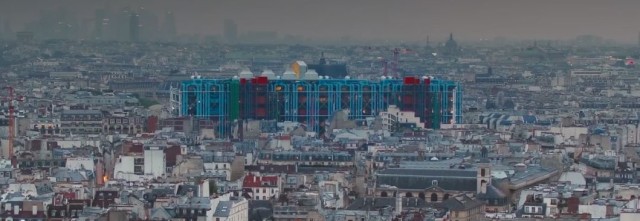
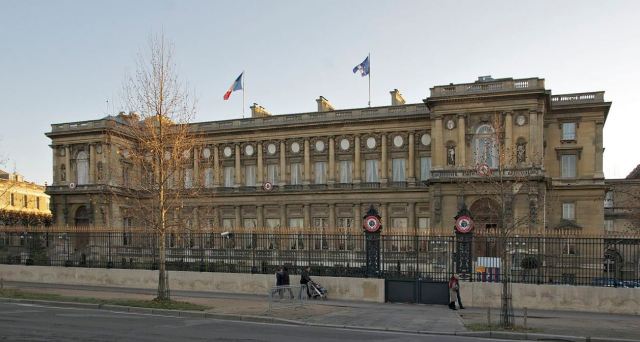
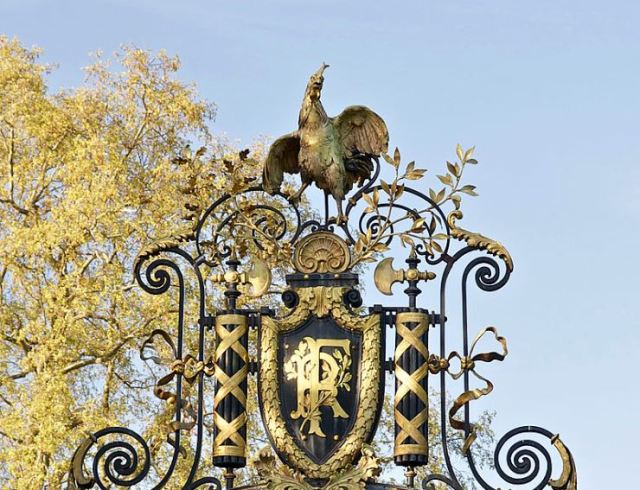
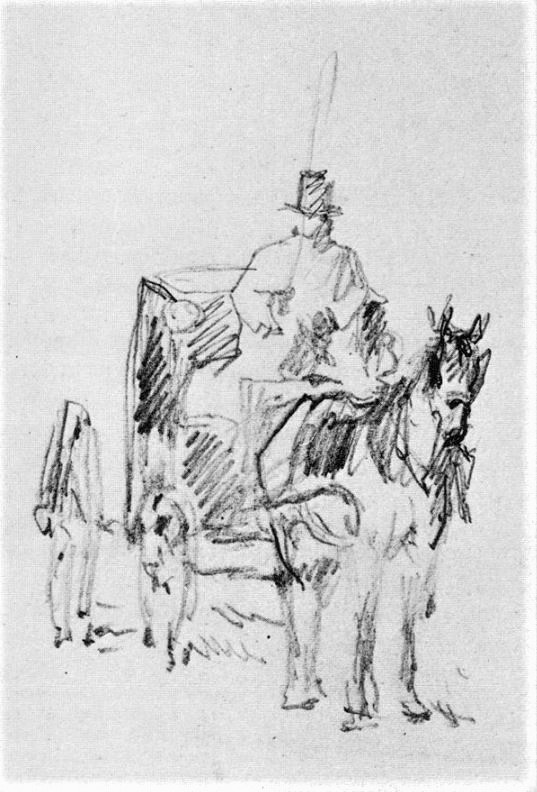
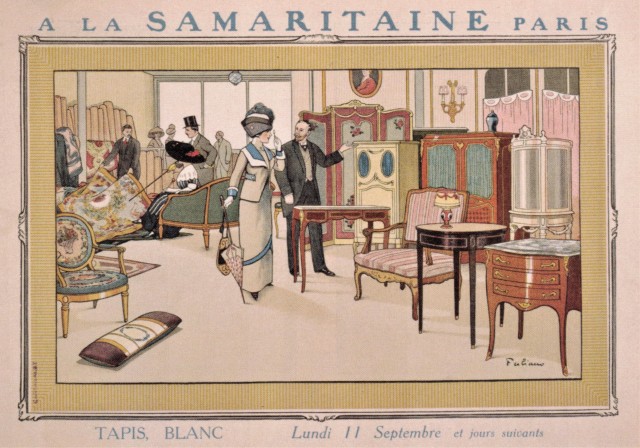
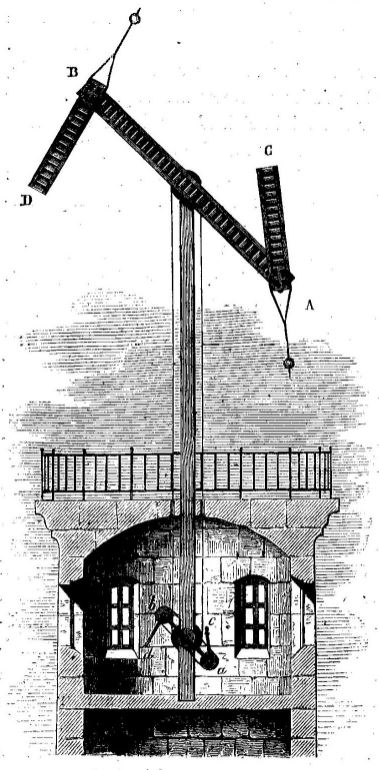
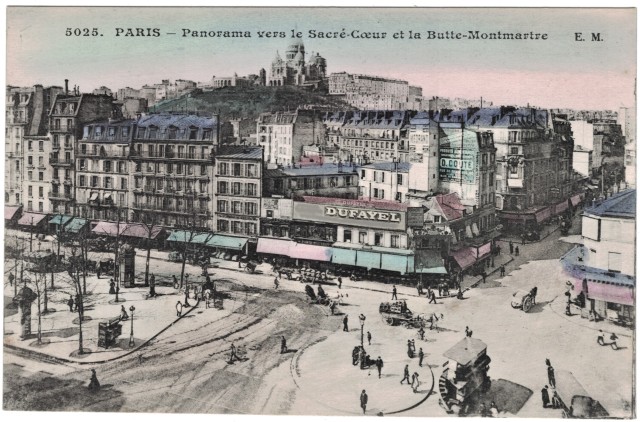
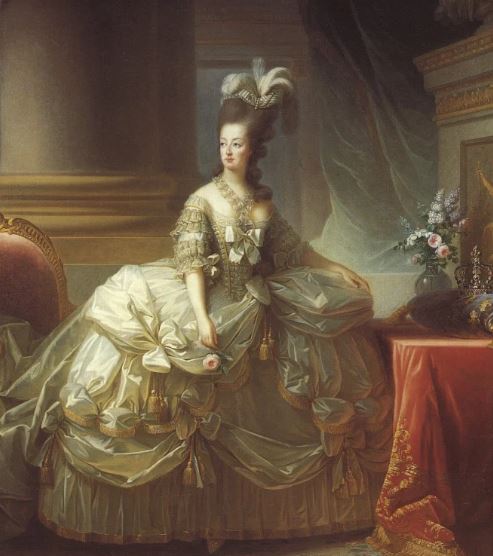
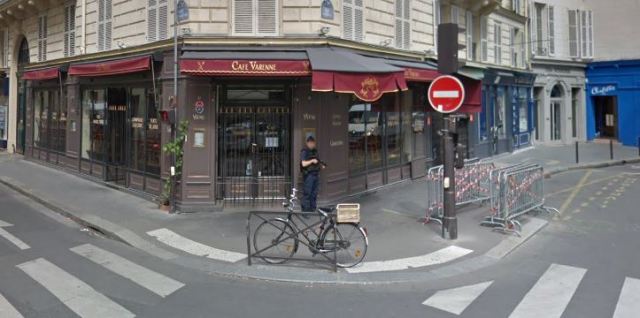
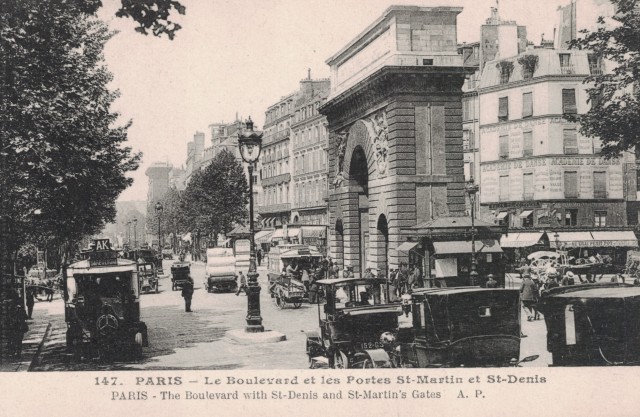
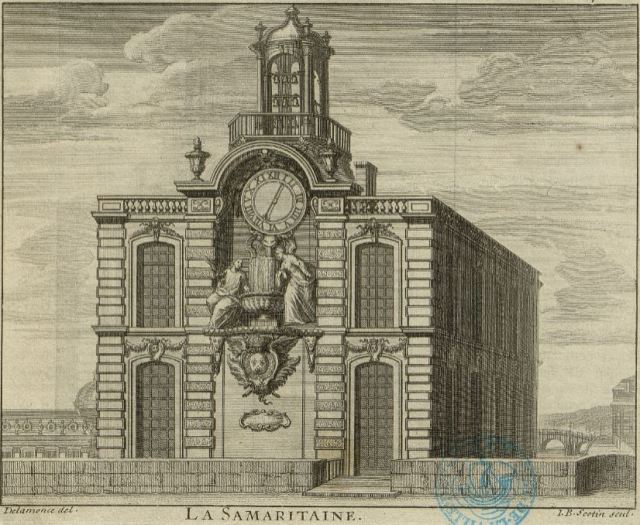
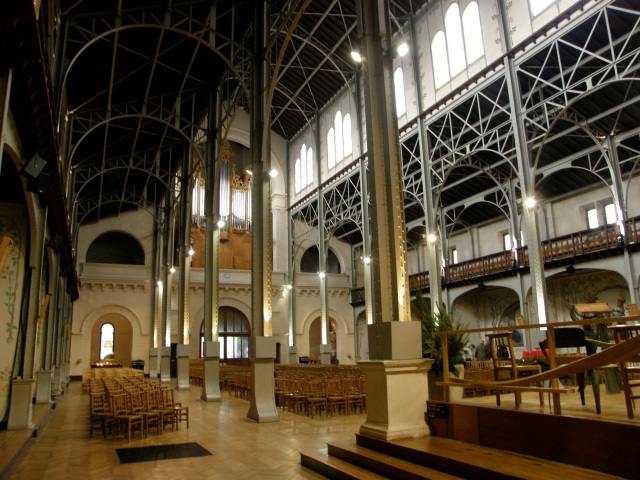

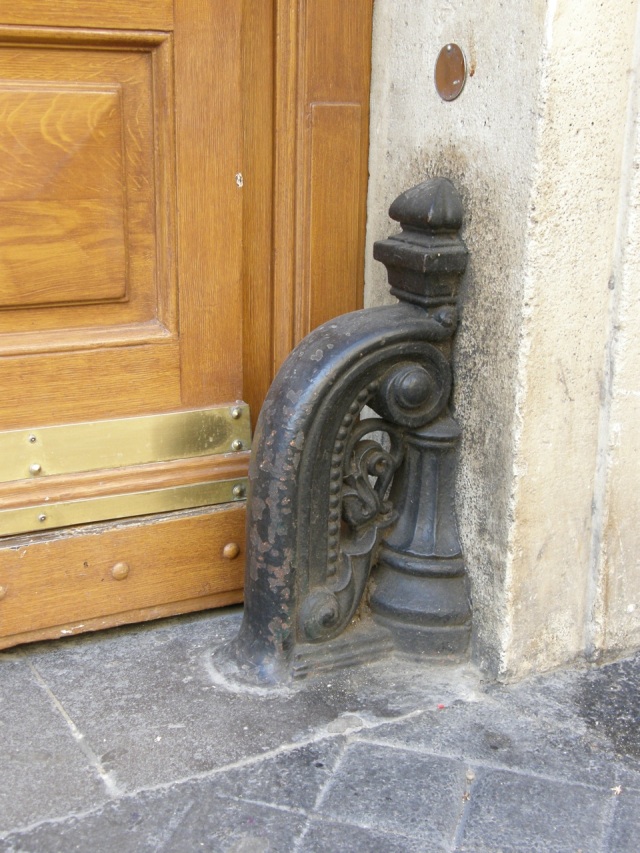
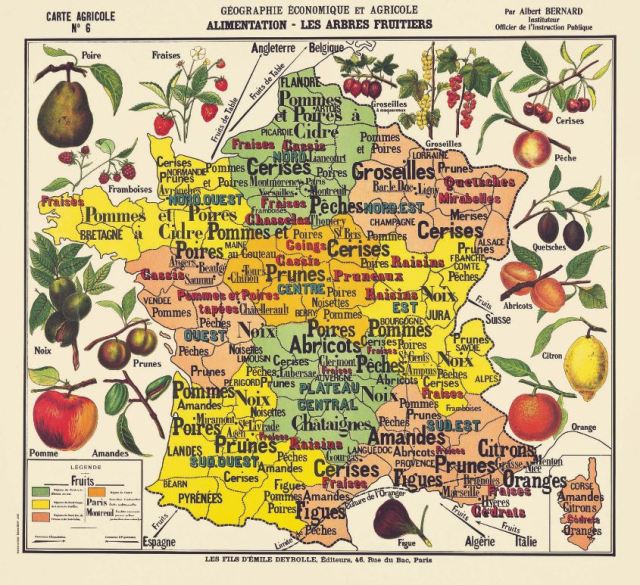
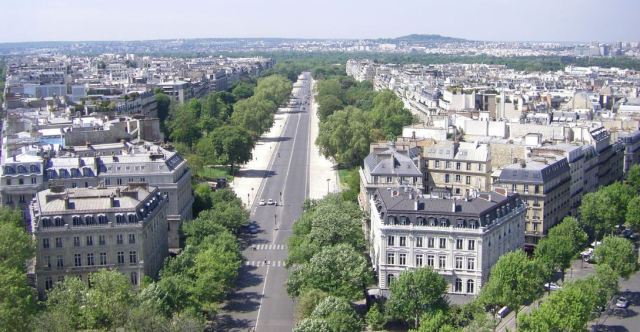
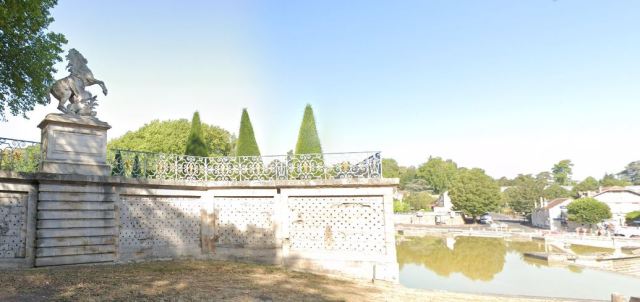
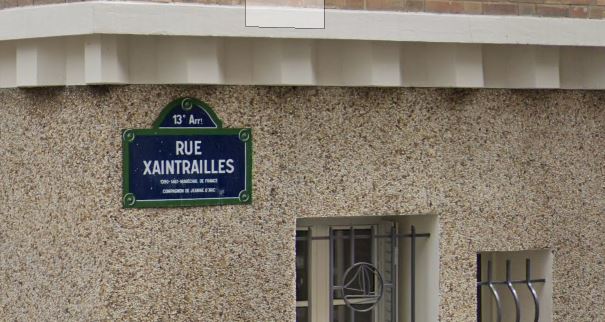
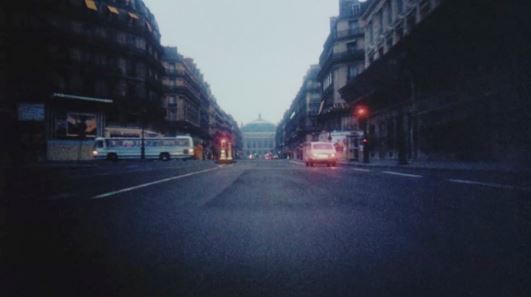





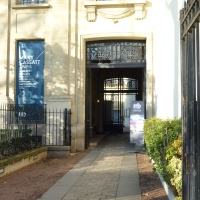




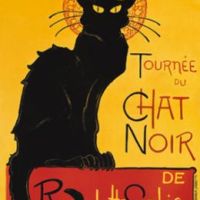









You are more Parisian than the actual ones !
I expect there are French people living in Toronto who know more about this city than we do!
This was fabulous, although I knew the answers to very little. I have shared the youtube video of Claude Lelouch to our Alliance Française Cöte du Nord, in northern New South Wales, Australia, giving credit to your text and your blog. Hope this was ok. I got excited and posted before I asked permission.
That’s just fine. I understand your excitement. The film is extraordinary.
Vraiment sympa!
Vous avez toujours des trouvailles insolites.
Merci !
A fun quiz despite the fact that I performed horribly!
Oh, some of the questions were impossible. In a way, the question format was intended to allow us to write about a few things that interested us but were not big enough for an individual blog! And to remind people of some earlier explorations.
Excellent trivia, as always.
I find that in Paris the awe of experiencing a visual ‘big sweep,’ that is just seeing Paris openly, is made all the more special by the layers of trivia that form the bigger (visual) picture. One can stand in the middle of the Place de la Concorde and enjoy the 360 degree visual majesty, and enjoy it for just that; or, if one so chooses, one can turn slowly like a clock-hand and point to this, and that, then this, then that, a vast cacophony and tapestry of specific vignettes back through time.
Thank you.
We are so glad you enjoyed the blog. We agree that there is so much to see in the details of Paris; the small touches that are distinctive and often reveal little stories if you let them. Happy New Year!
It was fun to take the quiz even if I performed abysmally. But what a thrill to plan our next trip to Paris with these additional pieces of information that will undoubtedly add so much more to our experiences there. And thank you for your blog. I have been following it now for several years from Victoria, BC and really enjoy the care and attention that you both take in bringing us so much valued and interesting information.
Thank you so much for your kind words. Have a very happy New Year, and let’s hope that 2021 reopens the prospect of travel to Paris once again.
Happy new year to you both Philippa, fascinating read as always.
Happy New Year to you, too! Glad you enjoyed the blog.